Downtown Charles Town Historic District: 100 Block West Washington Street
Introduction
Text-to-speech Audio
Images
129-131 W Washington Street
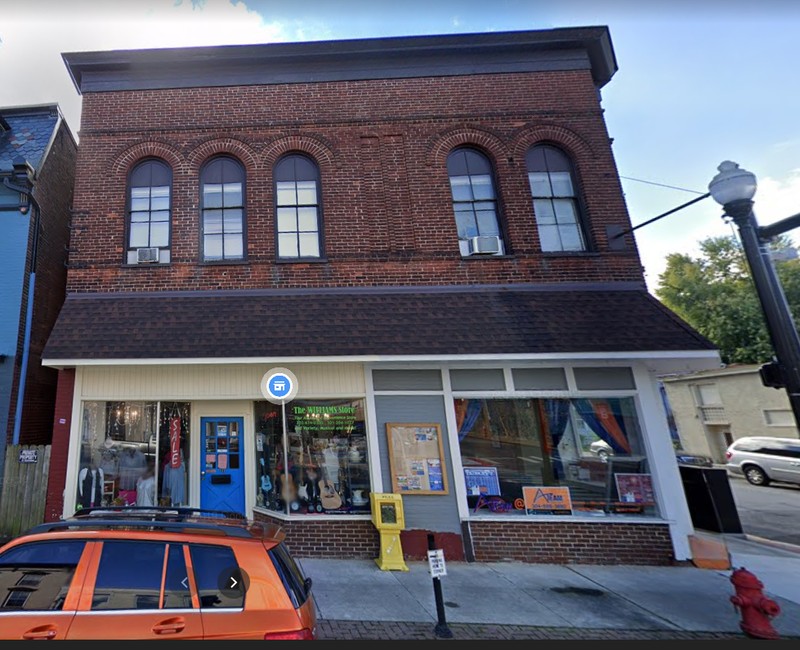
125-127 W Washington Street
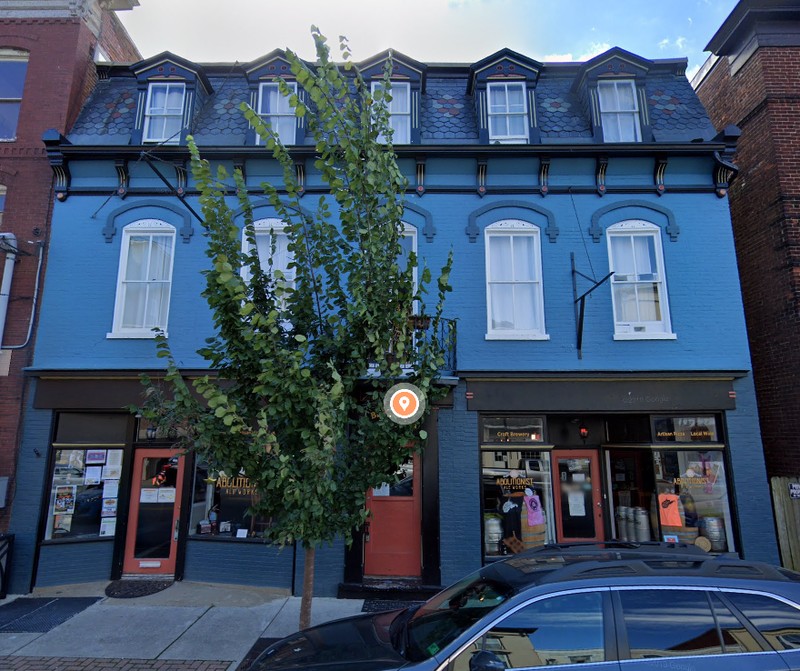
121-123 W Washington Street
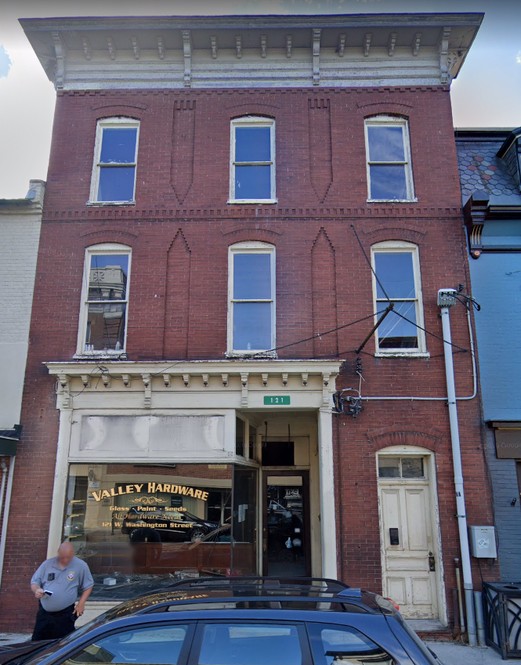
117-119 W Washington Street

115 W Washington Street
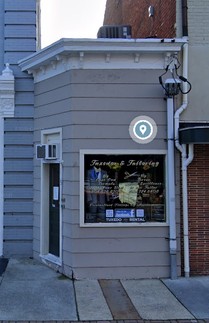
105-113 W Washington Street (Sadler Block)
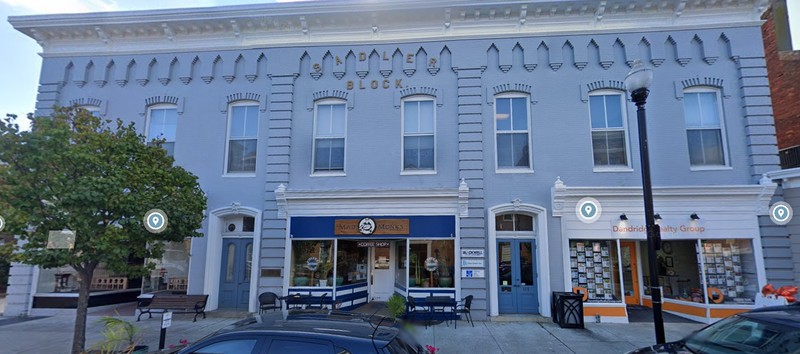
Charles Town Post Office
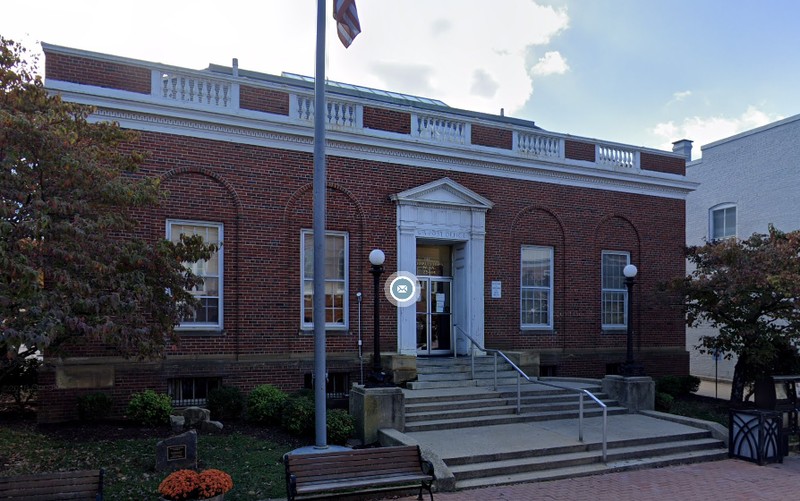
132 W Washington Street
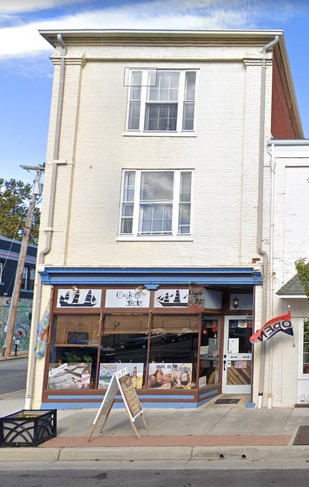
128-130 W Washington Street
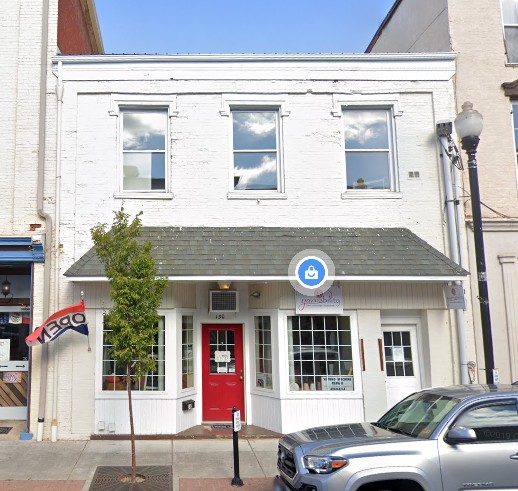
124-126 W Washington Street
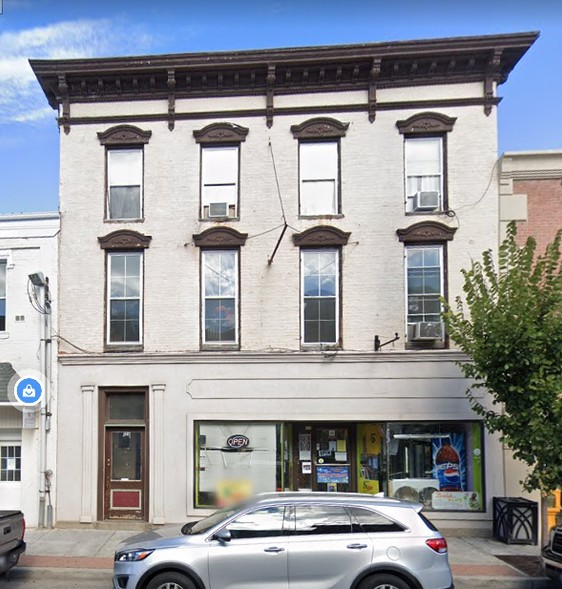
118-120 W Washington Street
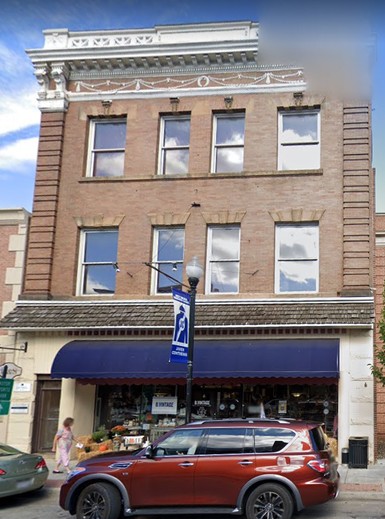
Charles Washington Hall
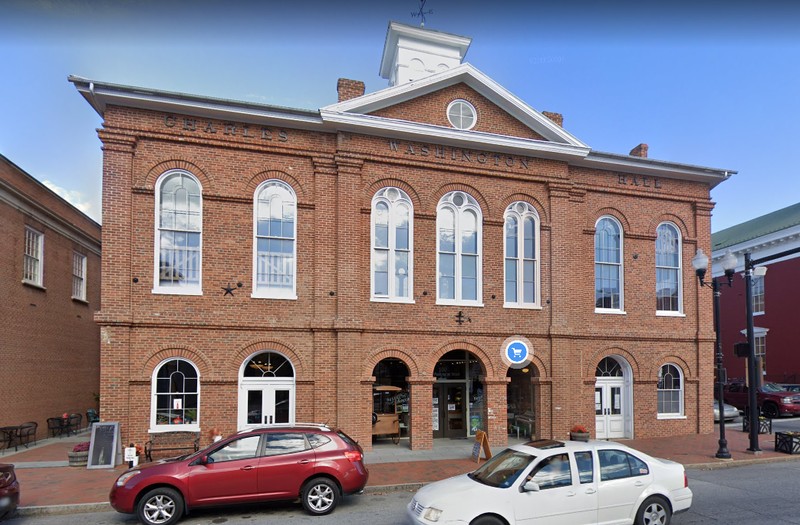
108 N George Street (Rouss Memorial Hall)
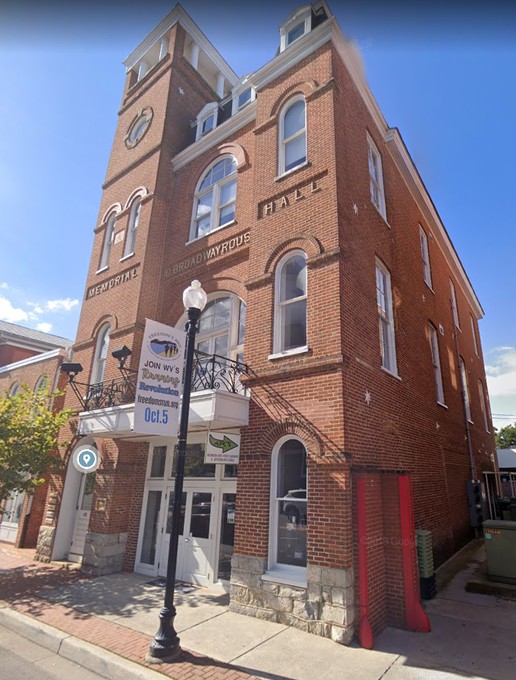
Backstory and Context
Text-to-speech Audio
Contributing structures:
129-131 W. Washington Street: “Classical Revival, c. 1900. Two story brick building characterized by arcaded windows in groups of twos and threes.”
125-127 W. Washington Street: “Second Empire, c. 1880. This five bay, two and a half story brick building is dominated by a slate mansard roof.”
121-123 W. Washington Street: “Italianate, c. 1890-1900. This commercial building is a three story, three bay Italianate brick structure.”
A hardware store operated in the building from 1897 (under the name Valley Hardware after 1924) to 2019.
117-119 W. Washington Street: “Federal, c. 1820s. This brick building is six bays with Flemish bond façade and parapets with double inside-end chimneys”
115 W. Washington St: “Italianate, c. 1880s. This small commercial building is a one story, two bay section of frame infill.”
105-113 W. Washington Street (Sadler Block): “Italianate, c. 1870-1880s. Two story eight bay brick building with a three section façade divided by brick pilasters”
The L. L. Sadler family operated a cabinet making shop here. In 1859 the Sadlers made the coffin for John Brown and their freight wagon was used to transport Brown to his execution.
101 W. Washington Street: Post Office (see separate entry)
132 W Washington Street: “Greek Revival, c. 1850s. Corbeled pilasters suggest the temple form on this Greek Revival, three story building.”
John Frederick Blessing opened a confectionary shop here in 1845. When John Brown was imprisoned in the jail in 1859, Blessing brought him food and showed him other kindnesses, and as a result Brown gave his Bible to Blessing on the day of his execution. During the Civil War Blessing served as a commissary sergeant in the Stonewall Brigade. The Spirit of Jefferson once had its offices on the second floor.
128-130 W Washington Street: “Greek Revival, c. 1850s. Brick corbeling creates the appearance of pilasters and a frieze band on this two story, three bay building.”
124-126 W Washington Street: “Italianate, c. 1880s. This three story, four bay brick building has a dominant cornice with brackets and arched-topped window hoods.”
120-118 W Washington Street: “Classical Revival, c. 1920. Three story, four bay brick building characterized by brick corbeled pilasters and cast stone trim forming flat arches with keystones.”
100 W Washington Street: Charles Washington Hall/Market House: “Romanesque, Georgian Revival, 1874. This building is of brick pilasters, pedimented gables and a central pedimented bay.”
The original Market House was constructed on this corner in 1806, but was burned in 1862 by Union soldiers retreating through Charles Town. This building was constructed in 1874 and named for the town's founder, Charles Washington. Several businesses have operated from the first floor, including the U.S. Post Office, and the second floor was used as an auditorium until the New Opera House opened. In 2017 the building underwent a $4 million renovation.
108 N George Street (Rouss Memorial Hall/Washington Street Artists &Jefferson Arts Council): “Romanesque Revival and Second Empire, c. 1877. Brick three and a half story, three bay fire hall with five story square tower with open top supported by round columns and hipped roof. Mansard roof. Early surviving fire hall and among the larger buildings in Charles Town.”
This building was constructed in 1896 with support from philanthropist Charles Broadway Rouss as the home of the Independent Steam Fire Company No. 1. It was designed by local architect Julius C. Holmes and served as a fire station for more than 100 years.
Sources
Belisle, Richard. "Crumbling Charles Town building repurposed for $4M." Herald-Mail Media. April 7, 2017. Accessed December 31, 2020. https://www.heraldmailmedia.com/news/local/crumbling-charles-town-building-repurposed-for-4m/article_db87952d-9ca6-566e-855d-357da2f68188.html.
Bush, David R. "Here is part of the History of Valley Hardware as it was told to me:" Valley Hardware. Accessed December 31, 2020. http://www.charlestownvalleyhardware.com/
Koonce, H.S. Leigh. "Remodeled Charles Washington Hall to Celebrate Grand Opening." WV Independent Observer. March 22, 2017. Accessed December 31, 2020. https://wearetheobserver.com/remodeled-charles-washington-hall-celebrate-grand-opening/
“National Register of Historic Places Registration Form: Downtown Charles Town Historic District.” Accessed December 10, 2020. http://www.wvculture.org/shpo/nr/pdf/jefferson/97000263.pdf.
“Walking Tour of Charles Washington’s Town: Walk in the Footsteps of History.” City of Charles Town and Jefferson County Convention & Visitors Bureau. Accessed December 10, 2020. https://s3.amazonaws.com/discoveritallwv.com/JCHS_CTTourBrochure.pdf.
Google Maps. Accessed December 31, 2020.
Google Maps. Accessed December 31, 2020.
Google Maps. Accessed December 31, 2020.
Google Maps. Accessed December 31, 2020.
Google Maps. Accessed December 31, 2020.
Google Maps. Accessed December 31, 2020.
Google Maps. Accessed December 31, 2020.
Google Maps. Accessed December 31, 2020.
Google Maps. Accessed December 31, 2020.
Google Maps. Accessed December 31, 2020.
Google Maps. Accessed December 31, 2020.
Google Maps. Accessed December 31, 2020.
Google Maps. Accessed December 31, 2020.
